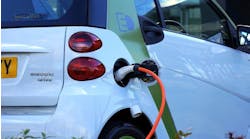Creating an environment for autonomous vehicles to safely operate on all streets is a massive undertaking. As ADAPT has reported, the implications stretch far beyond the automotive manufacturing, technology and repair fields. Law enforcement, pedestrians, insurers and more have big stakes in the process as well.
Government regulation and testing will also shape the autonomous future. The National Highway Traffic Safety Administration is starting to form policies around the operation of automated features—a “framework,” as the agency calls it. The NHTSA just released a large proposed rulebook for this purpose, and it’s up for public review.
“ADS (automated driving systems) technologies are different from more conventional automotive equipment, and it is necessary and appropriate to consider how ADS standards can and should be articulated,” said NHTSA Deputy Administrator James Owens in a press release. “The framework of principles would objectively define, assess, and manage the safety of ADS, while ensuring the flexibility to enable further innovation. NHTSA seeks feedback on the approaches described in the ANPRM.”
The NHTSA uses the acronym ADS, which stands for automated driving systems and follows the SAE definitions for on-road automated technologies. That’s the next step from current ADAS features. ADS refers to SAE levels 3-5 in automation, which doesn’t require human operation.
Four Areas of Concern
When determining how to best regulate these technologies, the government will split its focus into four main areas.
The first is “sensing,” according to the draft framework document. That is, how the systems take in information—often sensors and cameras.
The second area of focus is how ADS detects and categorizes other vehicles, pedestrians, infrastructure and environmental conditions.
The third area of focus is in how the software analyzes that data and plans the vehicle’s actions in response.
Finally, the fourth area is how the system carries out that plan “through interaction with other parts of the vehicle,” according to the NHTSA. The systems are integrated in all aspects of the vehicle, because the computer would be able to control the throttle, the brakes, steering, traction control and anything else necessary.
Roadblocks and End Goals
The NHTSA notes in its regulatory framework that previous efforts have focused on vehicles themselves when creating safety standards instead of the technology. But this new path requires a different way of thinking about safety standards.
Traditionally, standards were made with human drivers in mind. That’s why vehicles are required to have mirrors, dash controls and other parts with which drivers interact. The automated driving world will involve different requirements. The same goes for testing.
“Further, while steering machines and other equipment can be made to simulate human drivers in conducting the track testing of vehicles with manual controls, having NHTSA instruct the ADS of a vehicle that lacks manual controls how to perform the same testing may be more challenging,” the framework document said.
The end goal is, of course, safety. The vision of removing human error from the world of vehicle travel is at the heart of automated wishes, but it’s a tough road to ensure that the technologies have the right requirements and safeguards in place to put that safety at the fore.
Before, it included seat belt and airbag requirements. Those will still matter, but what else will change when everyone in the vehicle becomes a passenger?




